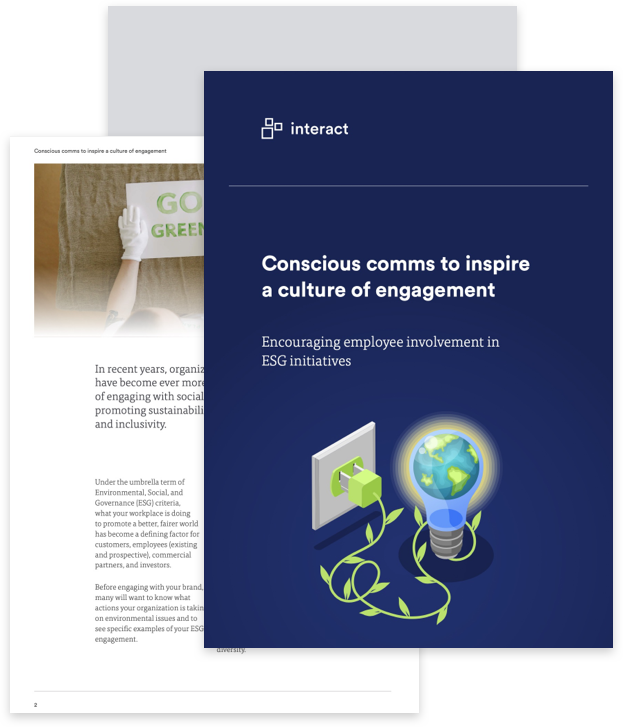Most organizations are already attempting to attract and retain the Gen Zers who have entered the workforce. With more Gen Z employees due to arrive in coming years though, the need to engage with younger workers is more important than ever.
Generation Z encompasses around 2.56 billion people worldwide, and by 2030 they will make up around 30% of the global workforce. In the US alone, Gen Z employees account for almost a third of the overall population, more diverse and better educated than any generation before them.
Who are Gen Z?
Born between 1997 and 2012 (they were 1 year old when the google.com domain name was registered), your current and future Gen Zers were raised alongside the internet and social media.
As expected, this significantly influences how they interact with their environments and provides them with different values than older colleagues from the Baby Boomer, Gen X, and Millennial generations.
There are many factors differentiating ‘Zoomers’ from their generational counterparts, so communicating with them in the workplace needs to be well planned out. But, once mastered, it provides a huge opportunity for employers and employees alike to connect in a fulfilling way.
How Gen Z will change how organizations communicate
As the next cohort of Gen Z employees become more visible, organizations must learn how to relate to them. So, it’s essential to understand any career motivations and professional drivers, which isn’t always easy.
Generation Z studied and graduated in the aftermath of the Great Recession of 2008, they have grown up accustomed to cancel culture, and the vast majority cannot remember the pre-social media era. When it comes to communications, Gen Z can be a tough nut to crack for comms professionals not accustomed to the same circumstances.

Their strong familiarity with technology and instant fact-checking gives Gen Z a unique perspective on the definition of professional success. Their attitude and expectations demand an employer that agrees with their personal ethos, one that is relatable, transparent, and honest. Zoomers want to feel that they share values with their colleagues and are connected to a company mission they respect.
Gen Z staff also expect their employer to communicate with them meaningfully; with this generation, actions speak louder than words. And, as employers try to future-proof the workforce of tomorrow, attracting and keeping top talent from Gen Z will become essential as older personnel start to retire and Millennials move up the career ladder. Among other things, this means creating a robust training program with strong, empathetic leaders and communications that tangibly focus on the issues that matter – diversity, inclusivity, belonging, sustainability, and equality. For many within Gen Z, organizational reputation and action are table stakes and not merely a bonus.
What can communicators learn from Gen Z workers?
Gen Z have never known a world without social media or a workplace without digital devices. They have grown up with the connectivity of the internet and the always-on attitude that it brings. Digital is default for them; to feel unconnected is abnormal and jarring for most within Generation Z.
Your FREE guide to ESG communications
The connectivity of our younger generations even surpasses technology-obsessed Millennials. And that interaction, whether social, professional, or personal, is primarily carried out in a digital environment. An organization with a fully functioning intranet is entirely expected from those new graduates of Gen Z. They want multiple channels to chat with their colleagues, often finding emails too formal and face-to-face interactions impractical after being raised in a world of digital instant gratification.
And, why not? These days, in a global enterprise, alongside the rise of remote working, employees rarely sit together in the office five days a week.
The connected workforce is constantly changing and evolving, and Gen Z demands new, exciting ways to interact with colleagues. Gifs, emojis, short-form videos, and voice notes have replaced traditional and typically slower forms of communication. It’s one of the ways the younger generation of employees are permanently altering the world of work. Where many of the Baby Boomer generation are accustomed to telephone conversations or being together in an office, this style of internal communications driven by Generation Z keeps employees even better connected, just digitally.
Managing Gen Z employees in the workplace
Generation Z possesses a plethora of new skills, ethics, and experiences that are invaluable to employers. Not only are they community-minded and digitally savvy, but they are also loyal to organizations that treat them well. Adept at multitasking and seamlessly switching between physical human contact and digital channels, working on multiple devices and screens is the norm for Gen Z. Consequently, research shows that this increased media consumption has reduced their ability to focus for extended periods, meaning they can get easily distracted, with an attention span of just eight seconds.
That’s why organizations need to begin building unique recruitment and brand communication strategies to pave the way for attracting top talent from Generation Z. Managers and leaders must adopt a multifaceted communication approach to meet the needs of new Gen Z recruits. And, as only a proportionately small number of this generation have progressed into the workforce, these trends will change. Techniques to engage with these employees should be fluid and adapt as the world around us fluctuates, and as those already in the current workforce grow older and gain professional experience.
Intranet software allows employees to communicate and collaborate, but it goes deeper than that. It enables individuals to understand their role in an organization, what is expected of them, and that their leaders and colleagues value their daily efforts. Connecting with Gen Z through internal communications should be multichannel, unambiguous, and concise. As a generation who have never known the pain of dial-up internet speeds or web-only UX, it also needs to be fast, slick, and mobile-optimized.
This can differ from the strategy for older generations, some of whom will ignore certain media, prefer a high level of detail, and cherry-pick relevant information.
Your FREE guide to ESG communications
Here are five tips that will make communicating with Gen Z employees easier for any business:
1) Choose the correct medium and tone
The first step is to consider all employee communication strategies. Choose the right channels and forgo relying solely on now traditional media, such as email. But don’t completely disregard email – it still has a lot of value which is why, as well as other channels, your communications employee communication platform should also function as internal communications email software. Where it’s appropriate, an informal tone of voice will help your message to resonate.
Be genuine. If your organization sends out insincere, ambiguous communications that discourage transparency, Gen Z is guaranteed to pick up on it first and share with their colleagues in a way that mirrors social media virality.
Having grown up with the internet, they are experienced fact-checkers. Being disingenuous is perilous; internal communications that do not align with front-facing values or are viewed as unethical may break the trust of Generation Z, and it could be hard to win those employees back.
With the proper channels and communication style, it’s much easier to drive higher engagement levels to the target audience. For some out-of-the-box ideas, think about new aspects of design that may appeal to Gen Z, TikTok style short videos or humorous memes can go a lot further in attracting engagement than a long-form blog or mandatory read. But of course, it does depend on the topic and the communicator. Remember to send messages from figures who are authentic rather than broadcasting in a way that can be seen as simply capitalizing on the latest trends. Building authenticity for your comms personas is critical for long-term engagement and trust.

2) Support a mobile workforce
As children of the digital age, tech-savvy Gen Z employees were raised on smartphones – how they communicate at work is no different. This always-on mentality has meant they are used to looking at multiple screens, fact-checking information, and processing content faster than any generation before them.
In fact, Pew Research found that 95% of the 13-17 year age bracket have access to a smartphone. But while smartphones may be the device of choice, posting content solely on mobile is also a disservice. Segmenting employee audiences across multiple channels is vital to any engagement strategy, particularly to capture those that are younger and more easily distracted. Access to a suite of communications methods is ideal for attracting a multi-generational audience and avoiding alienating other workers. Being in more places increases the odds of engagement, so utilize smartphones (mobile apps and responsive content), tablets, laptops, and desktops.
Make sure communications look visually appealing or it will be challenging to capture that audience effectively. Poor experience means low engagement for this generation. All content must be optimized for desktop and mobile to ensure the content has the most chance of resonating with the intended audience.
3) Improve and celebrate company culture
Ethics and social responsibility are fundamental to Generation Z, and many of them think their employer should have this mindset too. Creating a working environment that reflects this makes the younger workforce more comfortable. Businesses should demonstrate that they have a cultural interest in diversity, corporate social responsibility, and sustainability to align with the social values of Gen Z. Workplace communications should reflect this but remember to practice what you preach!
Intranets connect organizations with their employees by creating a thriving culture. It provides a space for employees to grow, interact, and be productive. It also gives the company a fantastic opportunity to raise internal visibility on their ESG efforts. Use the intranet to create a cultural space, and allow Gen Z to live and breathe the brand they have chosen to work for.
When deciding on an employer or staying at an organization over their competitor, Generation Z wants to feel deeply invested in the company’s values and ethos. Like their older colleagues, they also want to be appreciated. We’ve already seen the impact that mass workforce changes can have during the period of the Great Resignation and the fight for talent. With digital skills gaps set to continue, successful organizations must attract the best of the best when it comes to employees. Improving company culture to suit the newer generations and not just reflect the needs of those older employees will make a business stand out from the competition, to avoid getting left behind.

4) On-demand information and connectivity
Allowing anyone to share information as and when they want is a quick and easy way to encourage collaboration and sharing. It should be as simple to post to a work intranet as to update social media. Adding a personalized news feed can ensure that the right people see relevant content at a time that suits them.
Enable users to find the people they need with a personalized search, allowing all employees and relevant posts to be categorized and discoverable. Updating, commenting, sharing, and editing should all be easy. Generation Z are typically very experience-driven, having grown up alongside websites with honed design and specialized UX. Making something inaccessible is a sure-fire way for Gen Z to get bored and go off to work on something else, siloing these new employees and keeping them unengaged.
5) Meaningful interactions
As with all communications, using the relevant terminology for your audience is critical. Particularly for Gen Z employees, meaningful interactions and communications need to speak directly to them. Companies should ensure that they are open-minded and encourage diversity; in return Generation Z will show loyalty and hard work. But having grown up in a world of intensive marketing from every angle, they can be cynical and will see through insincere or inconsequential efforts quicker than previous generations.
The requirements of employees are evolving as Gen Z make their way into organizations. With skills gaps, a fight for talent, and high recruitment costs, it is more important than ever before to attract and keep this new cohort by creating a social intranet that everyone can enjoy. Communications that focus on transparency and engagement will effectively encourage intergenerational collaboration within the workplace and ensure employee engagement doesn’t risk stagnation by concentrating on the older generations and forgetting how important it is to keep intranets accessible and engaging for all.


